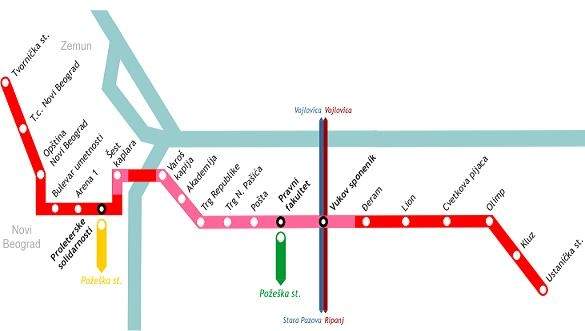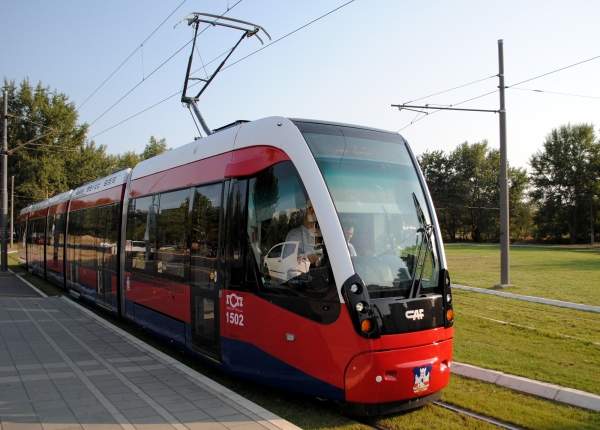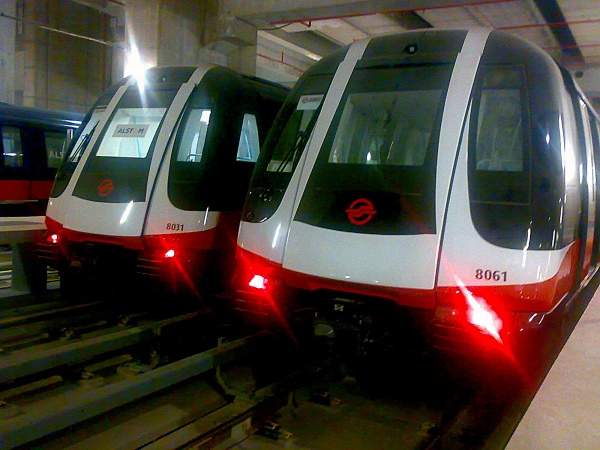Belgrade Light Metro, also known as BELAM, is a light rail transit system under development in Belgrade, Serbia. The €1bn project is a part of the Urban Master Plan of Belgrade 2021.
The project was conceptualised during the 1970s, but failed to reach construction phases due to the uncertain political situation. The dissolution of Yugoslavia during 1990 further postponed the studies of Belgrade Metro.
The extensive feasibility study conducted on light rail transport in 2000 provided input parameters for the master plan of Belgrade for 2021.
The Belgrade Light Metro will significantly improve the efficiency of the public transport system and enhance the quality of life of people and business, while contributing to the economic development in the area.
Belgrade Light Metro project details
The project is designed to create an improved public transport network in the capital of Serbia.
Located on the southern bank of the Danube, the development consists of a main line (Line 1) which will be further expanded to two more lines. The Line 1 is expected to be operational by 2017.
The full technical and operational characteristics including the type of rolling stock will be obtained through a preliminary study which is being conducted by France-based Egis Rail.
France has granted €3.8m for essential studies and offered funding guarantees for the part of construction works, as well as project implementation. Serbia will also assist the city of Belgrade to help secure the remaining funding required for the project.
Line routes of the light rail transit system
The 15km long Line 1 will connect Tvornicka in Zemun to Ustanicka. The line, starting from Tvornicka, passes through the municipality of Novi Beograd and further stretches towards the Sava river.
After passing over the new river crossing bridge, the line enters deep-level tunnels and continues towards the University of Belgrade Faculty of Law.
The line will then continue on surface from this station and follow the Kralja Aleksandra Bulevard before ending at its intersection with Ustanicka.
Line 2 will continue from Banovo brdo to the Law Faculty downtown. It will share the Faculty of Law/Posta station with Line 1 and extend towards Slavija and Prokop in deep-level tunnels. It will further run towards Sajam and the Topcider terminus.
Line 3 will start from Novi Beograd terminus where it will have an interchange with Line 1 at Proleterske solidarnosti station. From there, the line will run through Novi Beograd mainline train station and continue over the Sava before ending at Banovo Brdo terminus.
Infrastructure of the €1bn public transport project
Line 1 of the Belgrade Light Metro will have 25 stations. The major stations include Tvornicka St (downtown Zemun terminus), TC Novi Beograd, Opština Novi Beograd, Bulevar Umetnosti, Arena 1, Proleterske solidarnosti, Šest Kaplara, Varoš Kapija, Akademija, Trg Republike, Trg Nikole Pašića, Pošta, Vukov spomenik, Đeram, Lion, Cvetkova pijaca, Olimp, Kluz and Ustanicka St.
Line 2 will include stations at Pravni fakultet, Slavija, Klinicki centar, Prokop, Sajam (Belgrade Fair) and Hipodrom – Topcider (Topcider terminus).
Line 3 will have stations at Proleterske solidarnosti, Arena 2, Novi Beograd train station, Ada Ciganlija, Hipodrom – Topcider, Banovo Brdo, Blagoja Parovića Street and Požeška Street.
The new surface stations will have an 80m long platform. The platform length at underground stations will be 100m. Alstom will be responsible for the laying of track, catenaries and power supply. The company will also supply signalling equipment and rolling stock.
Rolling stock on the BELAM
In November 2011, Alstom signed a Memorandum of Understanding with the city of Belgrade to supply trains and a new rail transport system for the light rail metro. The characteristics of the rolling stock were defined under basic design standards.
Each railcar will be 35m long and 2.65m wide. It will be provided with single doors at its ends and double doors in the centre on either side. The design of the rolling stock will be finalised after the conclusion of the preliminary study.






